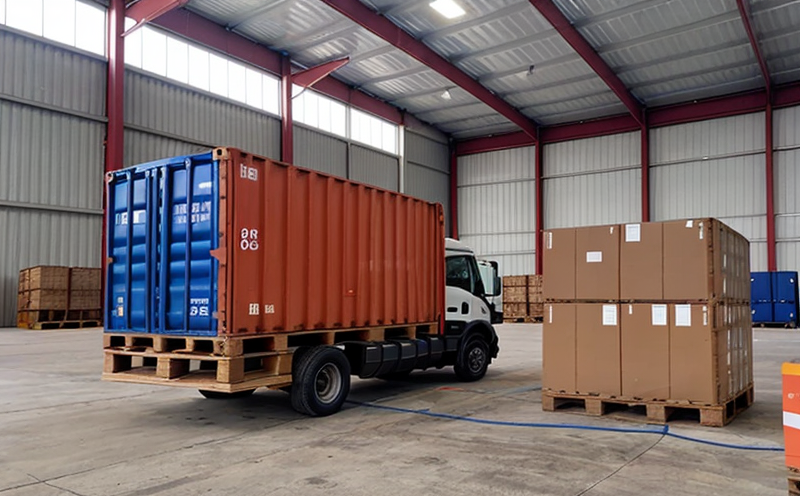Air freight pallet inspection
Ensuring the integrity and compliance of air freight pallets is crucial in the transportation and logistics industry. Air freight pallets play a pivotal role in securing cargo during transit, ensuring that goods reach their destination without damage or loss. For quality managers and R&D engineers dealing with this sector, it's essential to understand the inspection processes involved.
The primary purpose of air freight pallet inspection is to assess the structural soundness, material integrity, and compliance with relevant standards. This process ensures that the pallets are capable of safely supporting heavy loads during transport, especially over long distances by aircraft. For compliance officers and procurement teams, it's important to verify that these pallets meet international shipping regulations.
During inspection, several factors must be considered: weight distribution, stability under load conditions, materials used in construction, and overall structural integrity. The inspection process typically involves visual checks for damage or wear, mechanical testing, and sometimes destructive tests if non-destructive methods are inconclusive. This ensures that the pallets not only meet current standards but also perform reliably under real-world conditions.
The industry is heavily regulated to ensure safety and efficiency. Standards such as ISO 9237:1985 for aircraft cargo pallet containers, EN 13406:2002 for reusable freight containers, and ASTM D4026-18 provide guidance on the design and testing of air freight pallets. Compliance with these standards is not only a legal requirement but also demonstrates commitment to safety.
Air freight pallet inspection involves several steps aimed at ensuring that each pallet meets specified quality criteria before being shipped. These steps include:
- Visual Inspection: Checking for visible signs of damage or wear.
- Weighing and Measurement: Ensuring the pallets meet weight limits and size requirements.
- Mechanical Testing: Subjecting the pallet to simulated load conditions to assess its structural integrity.
- Destructive Testing (if necessary): Performing tests that involve breaking down the pallet to fully understand its failure points.
By adhering to these stringent inspection protocols, transportation and logistics companies can maintain high standards of service, ensuring the safe transport of cargo. This not only protects against potential damage but also enhances the reputation of the company within the industry.
Applied Standards
The inspection of air freight pallets is guided by several international standards that ensure safety, reliability, and compliance. These include:
- ISO 9237:1985 Aircraft Cargo Pallet Containers: This standard specifies the design, construction, and testing requirements for reusable aircraft cargo pallet containers. Compliance with this standard ensures that the pallets can withstand the rigors of air transport.
- EN 13406:2002 Reusable Freight Containers: This European standard provides detailed specifications for reusable freight containers, including air freight pallets. It covers aspects such as construction materials and mechanical properties to ensure durability and safety during transportation.
- ASTM D4026-18 Standard Practice for Use of Reusable Transport Packaging in Air and Ground Transportation: This American standard outlines best practices for the use of reusable transport packaging, including air freight pallets. It emphasizes the importance of proper handling, maintenance, and testing to ensure the continued safe use of these pallets.
These standards are crucial because they provide a benchmark against which all air freight pallet inspections are conducted. Compliance with these standards ensures that the pallets meet not only local but also international regulations, thereby enhancing safety and reliability in air cargo transportation.
Scope and Methodology
| Aspect | Description |
|---|---|
| Visual Inspection | This involves a thorough examination of the pallet's exterior to identify any visible signs of damage, wear, or deterioration. This includes checking for cracks, dents, and other physical imperfections. |
| Weighing | The weight of each pallet is measured against specified limits to ensure that it does not exceed maximum load capacities. This prevents overloading, which can lead to structural failure during transit. |
| Mechanical Testing | Simulated loading conditions are used to test the structural integrity of the pallet. This involves placing controlled loads on the pallet and monitoring its response to ensure it can safely support cargo under normal operating conditions. |
| Destructive Testing (if required) | In cases where non-destructive methods yield inconclusive results, destructive testing is conducted. This involves breaking down the pallet to determine its failure points and understand how it behaves under extreme stress. |
The methodology for air freight pallet inspection is designed to be comprehensive yet efficient. The goal is to identify any potential weaknesses or issues early in the process, thereby minimizing risks during transit. This ensures that only pallets meeting strict quality and safety standards are used in transportation.
For quality managers and R&D engineers, understanding these methodologies is crucial for optimizing inspection processes. By leveraging advanced testing techniques and adhering strictly to international standards, companies can enhance their operational efficiency while maintaining high levels of safety and reliability.
Competitive Advantage and Market Impact
The inspection of air freight pallets offers significant competitive advantages in the transportation and logistics industry. By ensuring that each pallet meets stringent quality standards, companies can enhance their reputation for reliability and safety. This is particularly important given the increasing demand for efficient and secure cargo transport.
Compliance with international standards such as ISO 9237:1985, EN 13406:2002, and ASTM D4026-18 not only ensures legal compliance but also demonstrates a commitment to excellence. This can lead to improved customer satisfaction and increased market share. Clients are more likely to trust companies that prioritize safety and quality in their operations.
The use of advanced inspection techniques allows for early detection of potential issues, reducing the risk of costly delays or accidents during transit. By maintaining high standards throughout the supply chain, companies can build stronger relationships with clients and stakeholders. This enhances overall market impact and positions them as leaders in the industry.





